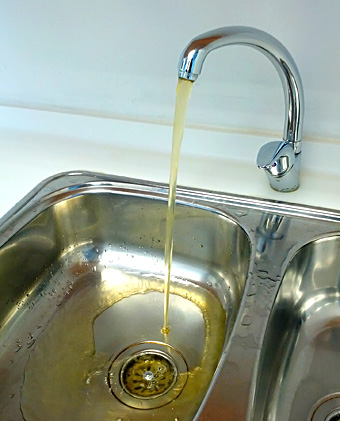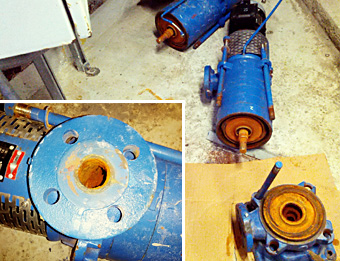|
It is such a refreshing experience to take a morning shower and a good cup of coffee or tea before heading to work. What if the water pouring out from the faucet is muddy or the coffee is tainted with a rusty taste? Certainly, such awkward experience may not be a situation one encounters frequently but it is a rather different scenario when it comes to water quality in a new building.
The recently occupied LSK Business Building (LSKBB) and the Institute for Advanced Study Lo Ka Chung Building (IAS) were caught in a poor potable water quality situation. Water supply to the upper floors of the buildings was found turbid with a yellowish colour. Detailed analysis of the water samples collected from the pantries in these areas revealed no sign of heavy metals but a high concentration of iron. The iron content found in the water samples did not reach a point which warranted any health concerns but the yellowish, muddy appearance had provoked a sense of unease to the occupants. The yellowish precipitates collected from the water samples were salts composed of mainly iron which dissolved rapidly with decreasing pH of the water. As the potable water supply to the LSKBB comes from a water tank on the roof, the difference identified between the water samples collected from the lower floors and the upper floors suggested that there was a problem with the water supply network on the upper floors rather than a contamination issue associated with the water tank on the roof. This was also the same for IAS as the design of the water supply network is very much the same in both buildings.
Investigation was conducted trying to identify the root cause of the problem. A strategic water sampling survey was performed to examine the possible causes of the problem. Iron content found in the water samples collected from all the potable water supply tanks and pantries on the lower floors was within the limit established by the World Health Organization (WHO). The turbidity of the samples collected also satisfied the relevant limit established by the Water Supplies Department of Hong Kong. However, the iron content in the water samples collected after water passed through a set of booster pumps in the pump rooms in both buildings was found significantly higher. The booster pumps are designed to provide necessary pressure to support water supply to the upper floors. The turbidity of these water samples was also higher than the other samples collected. This information has given the clearest indication that the culprits were the booster pumps. The booster pumps were then dismantled for further examination. It was not a surprise to see that the pumps were completely rusty including the parts which had direct contact with the potable water. The cast-iron pumps were apparently not suitable for the purpose designed, especially in an area where low water consumption is expected. Low water consumption rate allows time for iron to precipitate and the formation of the yellowish salts. The rusty pumps were replaced eventually with stainless steel pumps to prevent recurrence of the rusty pump problem.
|
|
 |
|
|
 |
| Rusty old booster pumps |
|
 |
| New booster pumps |
|